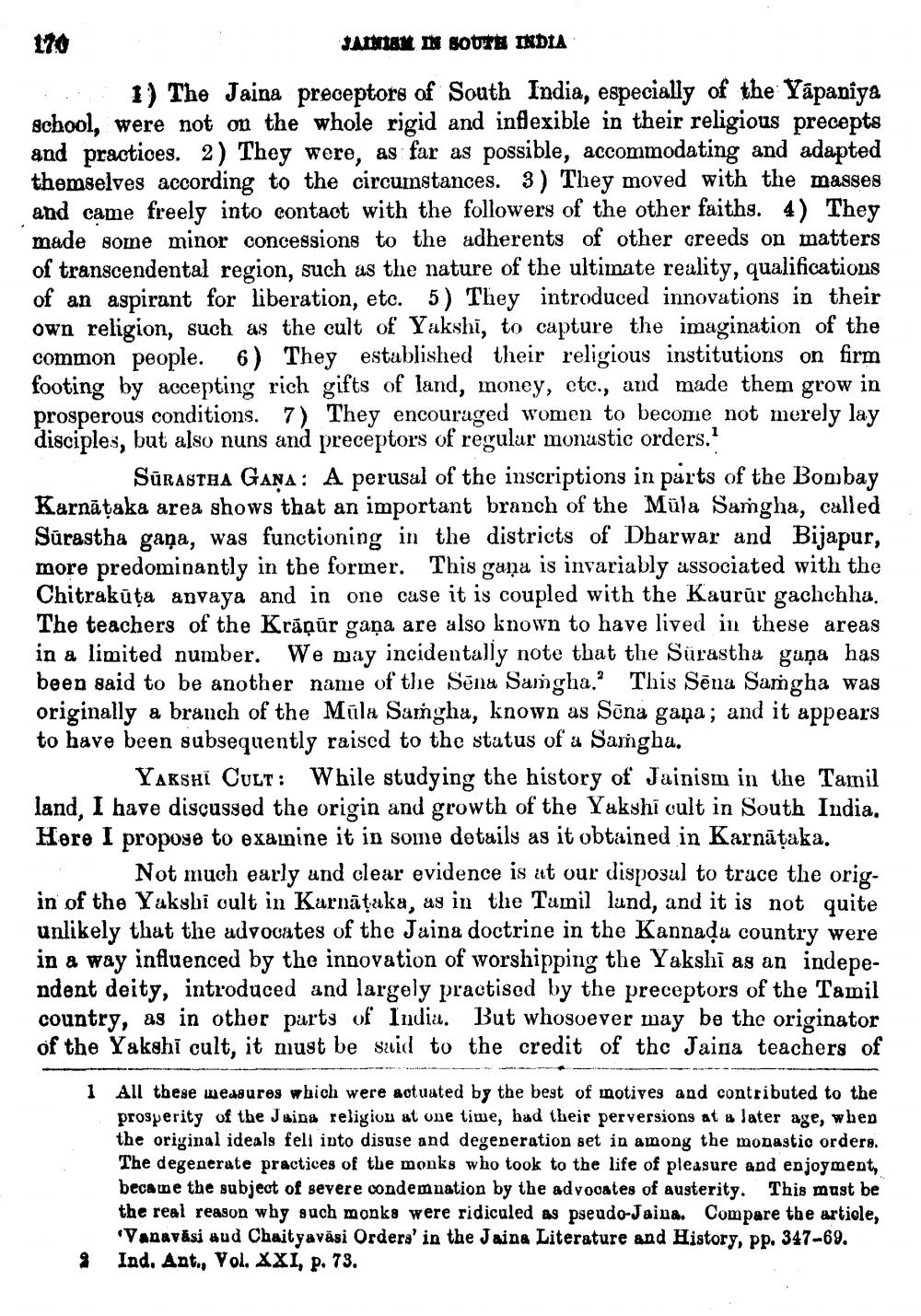________________
JAINIAM IN SOUTH INDIA
1) The Jaina preceptors of South India, especially of the Yāpaniya school, were not on the whole rigid and inflexible in their religious precepts and practices. 2) They were, as far as possible, accommodating and adapted themselves according to the circumstances. 3) They moved with the masses and came freely into contact with the followers of the other faiths. 4) They made some minor concessions to the adherents of other creeds on matters of transcendental region, such as the nature of the ultimate reality, qualifications of an aspirant for liberation, etc. 5) They introduced innovations in their own religion, such as the cult of Yakshi, to capture the imagination of the common people. 6) They established their religious institutions on firm footing by accepting rich gifts of land, money, etc., and made them grow in prosperous conditions. 7) They encouraged women to become not merely lay disciples, but also nuns and preceptors of regular monustic orders.
Sūrastha Gana: A perusal of the inscriptions in parts of the Bombay Karnāțaka area shows that an important branch of the Müla Samgha, called Sūrastha gana, was functioning in the districts of Dharwar and Bijapur, more predominantly in the former. This gaña is invariably associated with the Chitrakūta anvaya and in one case it is coupled with the Kaurūr gachchha. The teachers of the Krāņür gaņa are also known to have lived in these areas in a limited number. We may incidentally note that the Sürastha gaña has been said to be another name of the Sēna Samgha.' This Sēna Samgha was originally a branch of the Mula Samgha, known as Sõna gaña; and it appears to have been subsequently raised to the status of a Samgha.
Yakshi Cult: While studying the history of Jainism in the Tamil land, I have discussed the origin and growth of the Yakshi oult in South India. Here I propose to exainine it in some details as it obtained in Karnāțaka.
Not much early and clear evidence is at our disposal to trace the origin of the Yakshi oult in Karnäţaka, as in the Tamil land, and it is not quite unlikely that the advocates of the Jaina doctrine in the Kannada country were in a way influenced by the innovation of worshipping the Yakshi as an independent deity, introduced and largely practised by the preceptors of the Tamil country, as in other parts of India. But whosoever may be the originator of the Yakshi cult, it must be said to the credit of thc Jaina teachers of
1 All these measures which were actuated by the best of motives and contributed to the
prosperity of the Jains religion at one time, had their perversions at a later age, whep the original ideals felt into disuse and degeneration set in among the monastic orders. The degenerate practices of the monks who took to the life of pleasure and enjoyment, became the subject of severe condemnation by the advocates of austerity. This must be the real reason why such monks were ridicaled as pseudo-Jaina. Compare the article,
Vanaväsi aud Chaityaväsi Orders' in the Jaina Literature and History, pp. 347-69. % Ind. Ant., Vol. XXI, p. 73.




